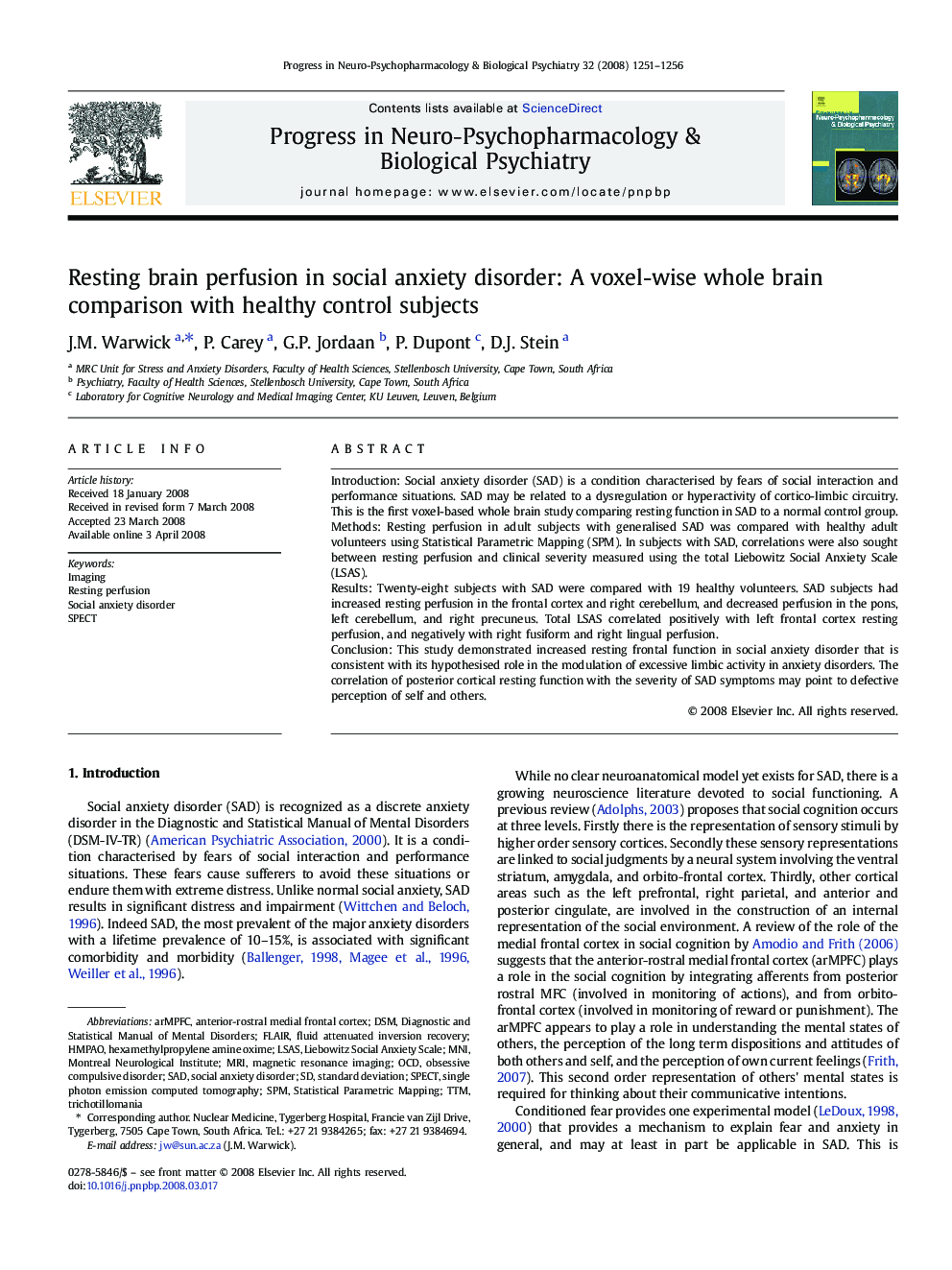| Article ID | Journal | Published Year | Pages | File Type |
|---|---|---|---|---|
| 2566588 | Progress in Neuro-Psychopharmacology and Biological Psychiatry | 2008 | 6 Pages |
IntroductionSocial anxiety disorder (SAD) is a condition characterised by fears of social interaction and performance situations. SAD may be related to a dysregulation or hyperactivity of cortico-limbic circuitry. This is the first voxel-based whole brain study comparing resting function in SAD to a normal control group.MethodsResting perfusion in adult subjects with generalised SAD was compared with healthy adult volunteers using Statistical Parametric Mapping (SPM). In subjects with SAD, correlations were also sought between resting perfusion and clinical severity measured using the total Liebowitz Social Anxiety Scale (LSAS).ResultsTwenty-eight subjects with SAD were compared with 19 healthy volunteers. SAD subjects had increased resting perfusion in the frontal cortex and right cerebellum, and decreased perfusion in the pons, left cerebellum, and right precuneus. Total LSAS correlated positively with left frontal cortex resting perfusion, and negatively with right fusiform and right lingual perfusion.ConclusionThis study demonstrated increased resting frontal function in social anxiety disorder that is consistent with its hypothesised role in the modulation of excessive limbic activity in anxiety disorders. The correlation of posterior cortical resting function with the severity of SAD symptoms may point to defective perception of self and others.
